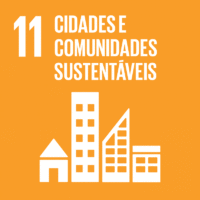Ciência_Iscte
Publicações
Descrição Detalhada da Publicação
Título Revista
Applied Network Science
Ano (publicação definitiva)
2021
Língua
Inglês
País
Reino Unido
Mais Informação
Web of Science®
Scopus
Google Scholar
Esta publicação não está indexada no Overton
Abstract/Resumo
Space Syntax and the theory of natural movement demonstrated that spatial mor- phology is a primary factor influencing movement. This paper investigates to what extent spatial morphology at different scales (node, community and global network) influences the use of public space by micromobility. An axial map and corresponding network for Lisbon’s walkable and open public space, and data from e-scooters parking locations, is used as case study. Relevant metrics and their correlations (intelligibility, accessibility, permeability and local dimension) for the quantitative characterization
of spatial morphology properties are described and computed for Lisbon’s axial map. Communities are identified based on the network topological structure in order to investigate how these properties are affected at different scales in the case study. The resulting axial line clustering is compared via the variation of information metric with the clustering obtained from e-scooters’ proximity. The results obtained enable to con- clude that the space syntax properties are scale dependent in Lisbon’s pedestrian net- work. On the other hand both the correlation between these properties, the number of scooters and the variation of information between clusters indicate that the spatial morphology is not the only factor influencing micromobility. Through the compara- tive analysis between the main properties of the public space network of Lisbon and data collected from e-scooters locations in a timeframe, centrality becomes a dynamic concept, relying not only on the static topological properties of the urban network, but also on other quantitative and qualitative factors, since the flows’ operating on the network will operate several transformations on the spatial network properties through time, uncovering spatiotemporal dynamics.
Agradecimentos/Acknowledgements
--
Palavras-chave
Space syntax,Micromobility,Urban network analysis,Community detection,Variation of information
Classificação Fields of Science and Technology
- Ciências da Computação e da Informação - Ciências Naturais
Registos de financiamentos
| Referência de financiamento | Entidade Financiadora |
|---|---|
| UIDB/04466/2020 | Fundação para a Ciência e a Tecnologia |
| UIDB/50008/2020 | Fundação para a Ciência e a Tecnologia |
| UI/BD/150800/2020 | Fundação para a Ciência e a Tecnologia |
Contribuições para os Objetivos do Desenvolvimento Sustentável das Nações Unidas
Com o objetivo de aumentar a investigação direcionada para o cumprimento dos Objetivos do Desenvolvimento Sustentável para 2030 das Nações Unidas, é disponibilizada no Ciência_Iscte a possibilidade de associação, quando aplicável, dos artigos científicos aos Objetivos do Desenvolvimento Sustentável. Estes são os Objetivos do Desenvolvimento Sustentável identificados pelo(s) autor(es) para esta publicação. Para uma informação detalhada dos Objetivos do Desenvolvimento Sustentável, clique aqui.

 English
English


